Wild Life

Here are my storyboard thumbnails for the opening title of Wild Life.
At the beginning of 1999, I was asked to help on a project that a small team of artists with two new directors had started about two years before. They had major stylistic problems and I was supposed to fix them and then return to Brother Bear.The title of that project was Wild Life.
After a short time I realized that the style was not the only problem; the story was an even bigger one. And that did not change until the very end!
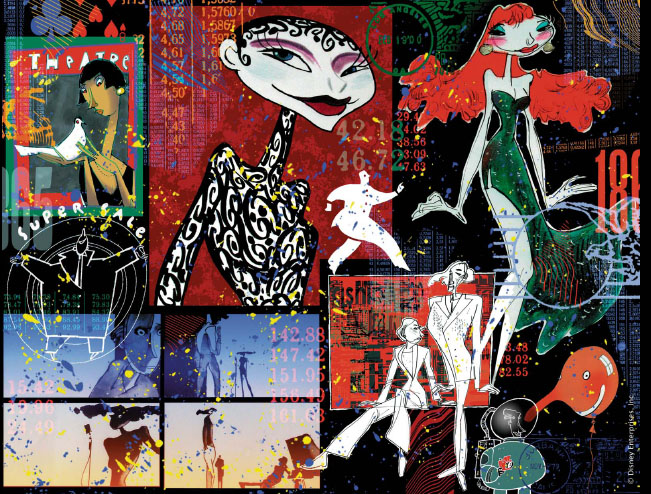
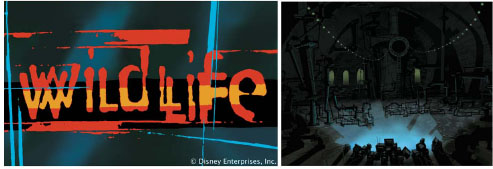
But I was fascinated by the basic stylistic ideas; they were just not organized. And the artists in the team were some of the best I had worked with so far. I liked the chaotic work environment so much that I stayed for over two years, all the way to the bitter end.
It was the first pure CG movie Disney ever had in preproduction. It was my first as well, so I had a lot to learn.
I had a chance to work with some amazing artists; Buck Lewis in Character Design; Dean Gordon, head of Background Design; Mac George, the best Layout Stylist; Jim Finn, Background Design; Mitch Bernal, 3-D Layout; Umesh Shukla, CG-Supervisor; and Kent Melton, Maquette Sculptor. Of course there were top 3-D Modelers and 3-D Animators as well. And for a short time, we had a Fashion Designer for the crazy futuristic costume look The style we developed was a very modern mixture influenced by all major pop artists and abstract painters like Steward Davis, as well as the most modern architects and furniture designers.

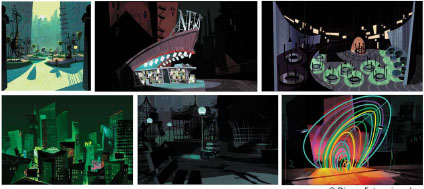
We studied their work and then went over the top with our ideas and designs.
The final look of the major areas in the story looked breathtaking, together with the very unusual character designs. It could have been an incredible movie.
It was a very sad moment when it went into turnaround. Somehow we had hoped the story would be fixed under a new leadership. Everybody loved our CG-test scenes. Anyway, it is history now.
The whole project seemed to be a big secret in the animation world. Probably because nothing had ever been published about it. I wish there could be a The Art Of… book one day. There were thousands of designs done by so many different artists; I remember Buck Lewis created more than one thousand character sketches. I did about five hundred, not to count the hundreds of environment and color sketches, and even more texture designs.
I will always remember these most creative years in my career, together with some of the most talented artists.
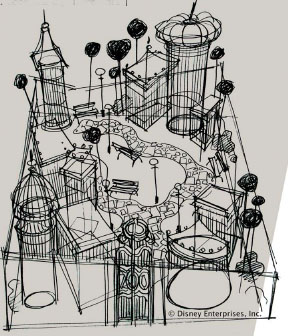
Anyway, the dream of a new art form-piece was over and I started to explore new ideas and looks along with Umesh Shukla, who had been head of CG on Wild Life. He is from India and has a background in Graphic Design as well. It was very helpful, as he knew everything about art and everything about the latest in technology.
From the very beginning, I remember him telling me, “Never think about how we might solve that look problem; in the end, design whatever you want. I will make it work.”
That sounded incredible — no limitations! We worked for a while on a complete new look for a Florida project called My Peoples, now shelved as well. I tried to mix all different American painter styles together; especially those of Thomas Hart Benton and Grant Wood. Their very unique landscape composition as well as an interesting use of lots of textures looked very appealing and new to me. And we studied Bill Peet’s children’s books and his way of using crosshatching to create textures. Umesh came up with a 3-D crosshatched world. The problem was it looked too spiky and we somehow needed to get rid of that artificial technical feel.
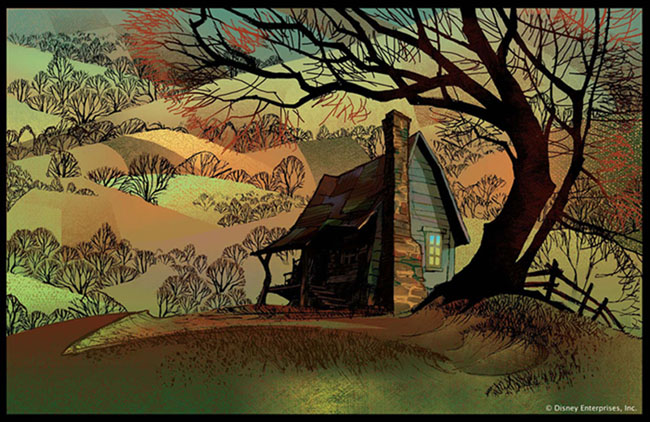
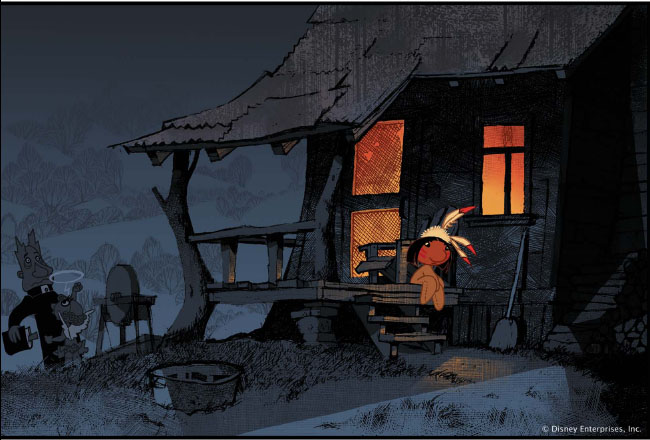
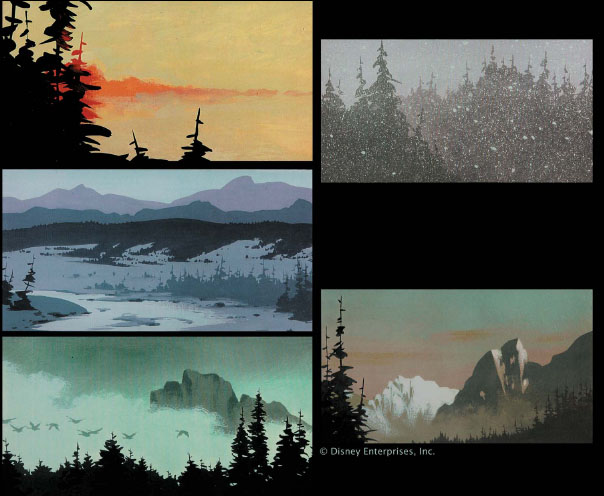
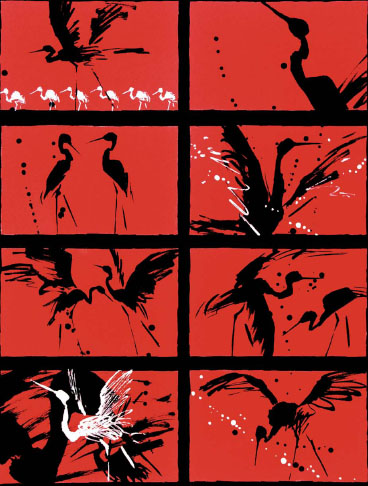
It became even worse when Umesh and I started to develop a short film for a planned new version of Fantasia. My idea was to show abstract art of the last 70 years, combined in a simple story about a bird that doesn’t fit into a bird society, kind of a non-conformist dreamer. We did CG tests with 3-D paintings in the style of Klee, Picasso, Miro and Matisse.
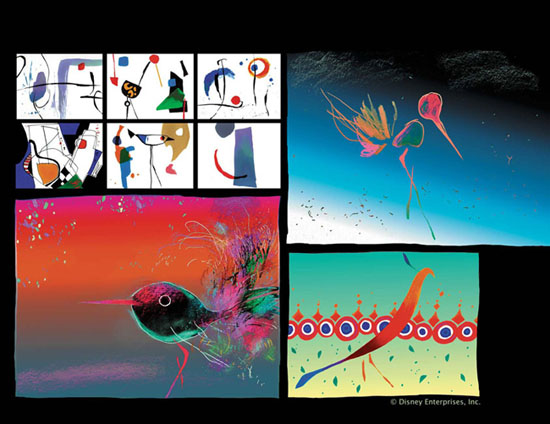
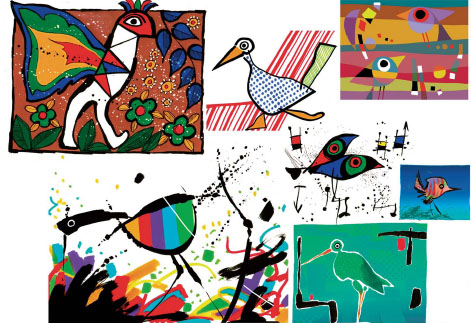
What we had tried to do was create a marriage between traditional and CG animation, and to create a look using new technology that had been impossible to even dream about some years before. We wanted to come up with a new art form. But, probably it was too much art.
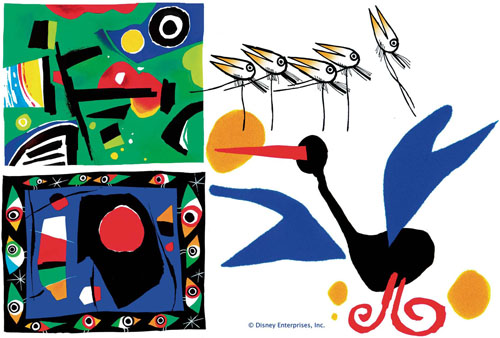
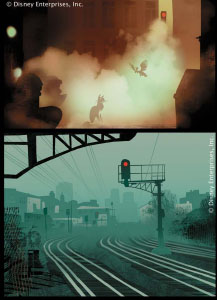
It looked like a new era had already started — the CG-era. The next project I was offered to work on was again planned as a 3-D movie, but, I could not get used to the idea of designing another “plastic” look. Fortunately, I was the first artist to get involved in that new project, which was Fraidy Cat, so I could design with no limitations.
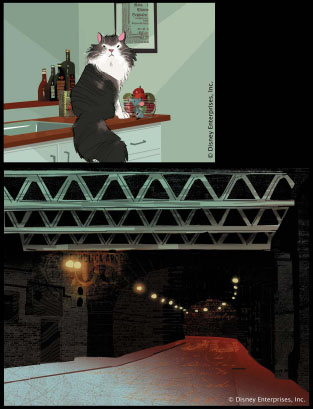
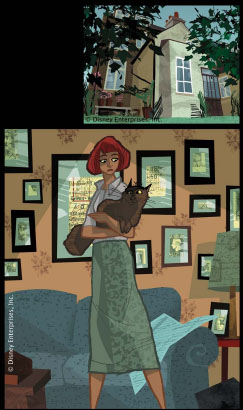
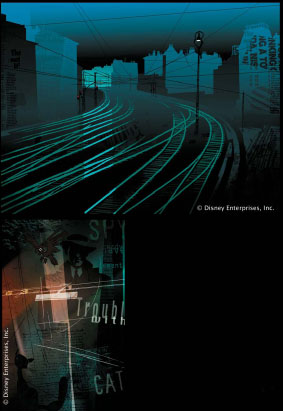
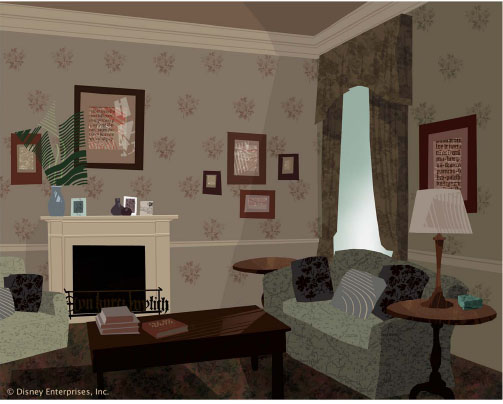
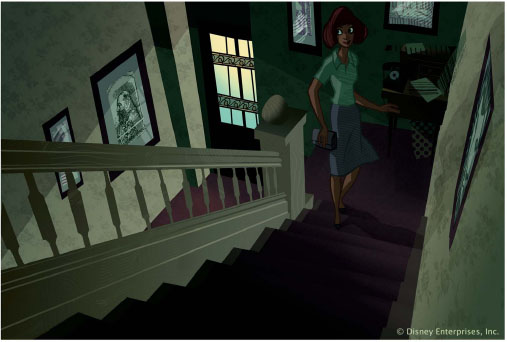
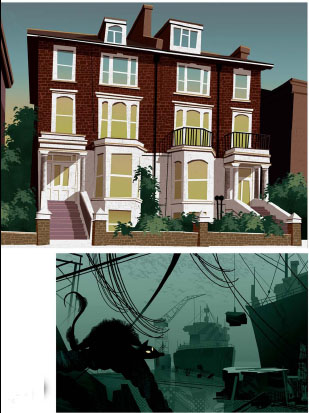
The story outline and the first treatment looked very promising. It was a little bit of a Hitchcock crime story about a cat and a parrot in London. Somehow, it reminded me of 101 Dalmations, one of my favorite movies.
What I tried to do was a combination of 2-D and 3-D. Everything was supposed to be built 3-dimensionally, but would look flat in the end. Only a moving camera would reveal that there was an optical illusion.
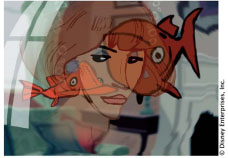
I used a lot of textures for the different “flat”-design elements, but the textures had nothing in common with the material they were supposed to show. You can see a little bit of that in the designs on these pages. To get that look I had to design some thousand different brushes, which became an obsession over the years.
In a way, I had tried to do what I had always done in the past; if I did not like a certain idea, I modeled it into something similar that I could live with. Anyway, CG had a promising future with the fast developing technology. My only hope is that more artists get involved in the decision making of the bigger studios. It might help the artistic quality of future movies.
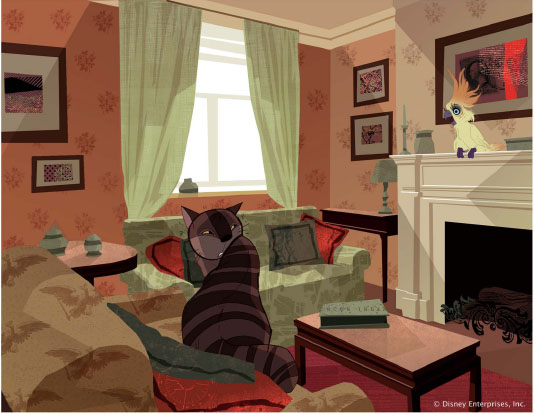
DECISION MAKING
It is something you always have to do in your personal life. Nobody teaches you, you have to learn it by yourself. One of the most important and difficult things in the design process is to decide that now is the moment my design is finished. That can be determined after 10 seconds or 10 hours.
You also have to decide about the choice of technique you are going to use, depending on the time you have, the budget and the subject. Is a small sketch enough or does it have to be a bigger illustration? Today, creating the artwork with computer software makes it much easier. Size is unimportant and you can work 10 times as fast as with traditional techniques. I remember very often how painfully slow it was to cut masks for air-brushing, and then during the final touches the airbrush pistol sprayed some nice unwanted spots on your artwork.
I had experienced that it was impossible to duplicate the freshness and originality of a small sketch when I had to create a “nicer” version in a bigger format.
It was very hard in the “old days” to decide when the felt pen and airbrush color design on special marker paper was finally finished. If you overworked it, there was unfortunately no undo button.
But with all of its advantages, technology today can give you some headaches as well. Painting software offers so many little tricks, so many filters, nice gradients and easy changes of color that you could actually work on the same piece of art forever.
Sometimes you accidentally come up with results you would have never dreamed of. That’s the dangerous part. Most of the time experiments like that lead away from your original concept. It is a good decision to stick with that idea and not to get lost and sidetracked with the temptations of technology. And a good recipe for me always was, look at the artwork the next day. If it still looks good then you can live with it.
